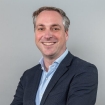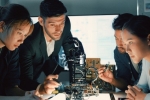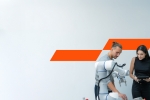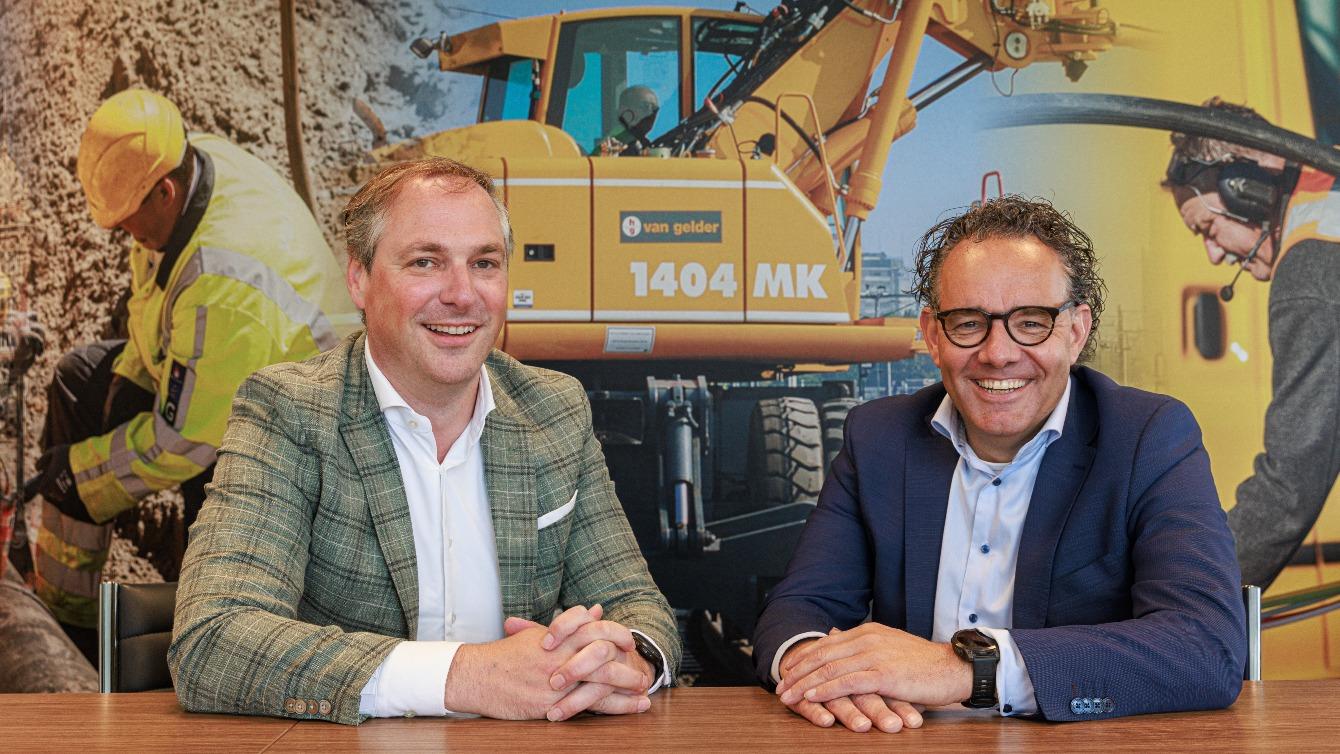Henk-Jan van der Veer, who joined Van Gelder 23 years ago and has been CFO since 2017, describes how the company has evolved in recent decades. ‘Until 2017, our growth was entirely organic. From then on we asked ourselves: how big does the company have to be to stay future-proof? We want to be a full-service partner. That meant adding certain specialisms and expanding our geographical reach. We also wanted to be able carry out all external works ourselves. Which we can now. We do everything you see outside the building envelope in infrastructure – except concrete.”
To achieve this goal, Van Gelder started acquiring companies. “We acquired six firms, and with them we now have the size we need.” The organisation now employs more than 2,000 people and has an annual turnover of over one billion euros.
Acquisitions do have a downside, notes Van der Veer: “Essentially, we all do the same thing – calculating, tendering, preparing and executing a project. But everyone works in their own way, which means we faced a tangle of (administrative) systems.” This caused inefficiencies and limited the exchangeability of employees and knowledge. “A work planner in division 1 may work very differently from one in division 2, even their jobs are essentially the same.”
‘At first, harmonisation may seem to lead to more work. But in the long run, things becomes easier’
Henk-Jan van der VeerCFO Van GelderProcess harmonisation as a starting point
What Van Gelder needed was process harmonisation. From the outset, the team decided not to harmonise on the basis of existing systems, but of processes. “Together with PwC, we sat down to describe all our processes, from A to Z,” says Henk-Jan. “We divided them into three categories: primary processes, steering processes, and supporting processes.” That was the start of a large-scale programme named Van Gelder United.
A total of sixteen processes were defined, without regard for the existing ways of working across the different divisions. “We didn’t look at what someone in the business does today, but at what the process as a whole requires – from the start of a project to its completion.”
Around 150 employees spent more than a year working on the process model. “Every business unit was invited to give input. In the end, everyone recognised that we basically all do the same thing, despite differences in approach.”
Reducing complexity
By mid-2023, a validated process model was in place – on paper. “I still have a thick process manual in my office with everything neatly written down,” says Van der Veer. The next step was to translate those process descriptions into supporting systems – which gave rise to the need for a new ERP system that could be aligned with the processes.
“PwC helped us through the selection, especially by helping us to reflect on key issues: What exactly do we want, what are the specifications, and what will it deliver?” The result was a Microsoft solution aligned with the standards commonly used across the Dutch construction and infrastructure sector.
The aim is to stick as closely as possible to that standard and avoid excessive customisation, explains PwC’s project lead Ron Martinek, a partner at PwC and specialist in digital transformations: “These ERP packages are like building blocks. Everything is in there. But the challenge is to take only what you really need, and avoid unnecessary ballast.”
“You want to build as little as possible,” adds Van der Veer. “You have a market solution and you want to adapt it to your processes. Let’s say you can cover about 80 percent. The remaining 20 percent is where the complexity lies. And in practice, that’s often where most of the time goes.”
‘PwC has guarded the process from start to finish, making sure we keep going in the right direction’
Henk-Jan van der VeerCFO Van GelderA three-way collaboration
The change programme at Van Gelder has been executed so far with a clear division of roles: Van Gelder is the client, PwC the business integrator, and software provider 4PS the system integrator. Van der Veer explains: “It’s like a triangle. PwC guards the process thinking from start to finish. The system supplier wants the system live as quickly as possible. And we want the process to work properly.”
He continues: “The steering committee makes the final decisions, but PwC is a real co-pilot. They’re not the ones at the controls, but they make sure we’re heading in the right direction. Without a co-pilot, a pilot cannot operate. One challenge is that PwC brings a level of expertise we cannot always match. That’s fine, we’re in different fields after all, but there can be gaps between the ideal process and the process in practice.”
Martinek: “We think carefully about how we can add lasting value to Van Gelder. Our goal is to contribute substantially now, but in a way that will ultimately enable them to stand on their own.”
Investing in a sustainable future
The implementation of the new system is a multi-year project set for completion by the end of 2026. Van der Veer: “It’s a major investment, intended to serve us for decades to come.”
That’s why careful decision-making is crucial. “We go to great lengths to ensure decisions are made safely and with a factual basis,” says Martinek. “But sometimes you just have to press the button and go live. That means accepting that you may not achieve 100% alignment with the user’s ideal, but a workable 80%, allowing for further optimisation.”
More revenue with the same people, AI as a tool
Ultimately, harmonisation must lead to higher labour productivity – an essential goal on today’s tight labour market. Van Gelder processes around 200,000 purchase invoices annually, a volume that requires speed, structure and as little manual work as possible. Van der Veer: “At first, harmonisation may seem to lead to more work. But in the long run, things becomes easier, especially for the people in the back office.”
Productivity gains must also be achieved on the construction site, particularly in administrative processing. “There is huge potential for savings there,” says Van der Veer. “By automating standard tasks and digitalising processes, we can do more with the same capacity.” Less manual work will give employees more time for other tasks, such as analysing, planning, and making data-driven decisions. “Those are the tasks people tend to enjoy more.”
Martinek: “Because AI is vital to PwC’s way of working, we see many examples of its strategic impact. At Van Gelder, using AI will be a key to automating standard tasks. It’s wise to at least make a start with AI. It does not have to be big: start small, and you’ll soon see how Au can reduce the workload.”
Van der Veer agrees that reducing the workload is no luxury on today’s tight labour market: “Finding new people is difficult. That’s why we need to remove the simple work from our systems, so we can generate more turnover with the same number of people. That’s what it’s all about in the end: realising the full potential of this transformation.”
Feet in the mud
Van Gelder United is a challenging journey. Van der Veer: “On Ascension Day and during the first go-live weekends, we had full teams of PwC and Van Gelder staff working to meet the deadlines. What I really admire is the tremendous drive, and the enthusiasm everyone has been demonstrating for this project’s success.
“What I see as PwC’s strength is their willingness to stand by us with their feet in the mud, as it were. They are there when we need them and when the project requires it. We all have our eyes on a shared goal.”
Contact us

Ron Martinek
Partner, Microsoft Alliance Lead Netherlands, PwC Netherlands
Tel: +31 (0)62 243 92 72
















